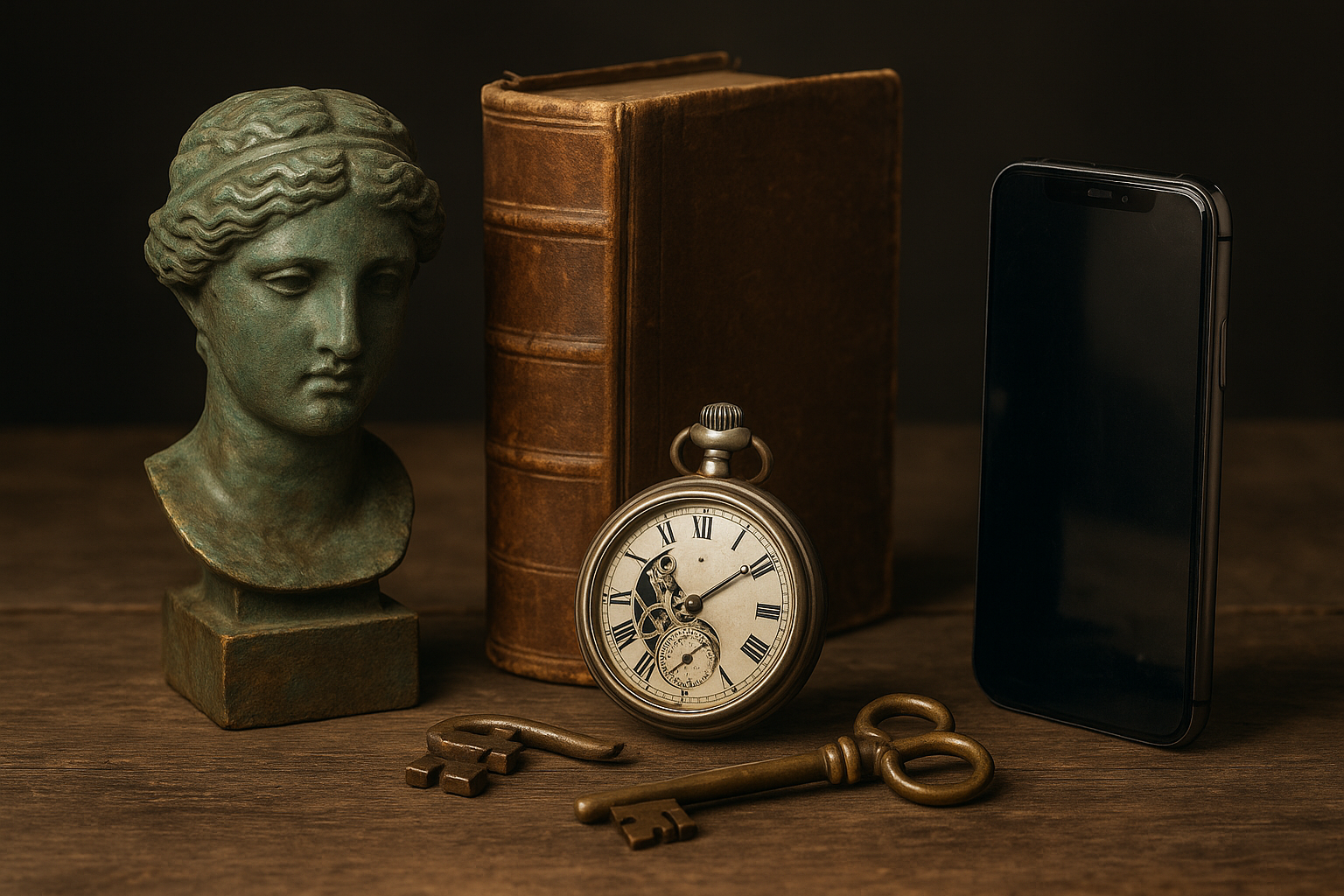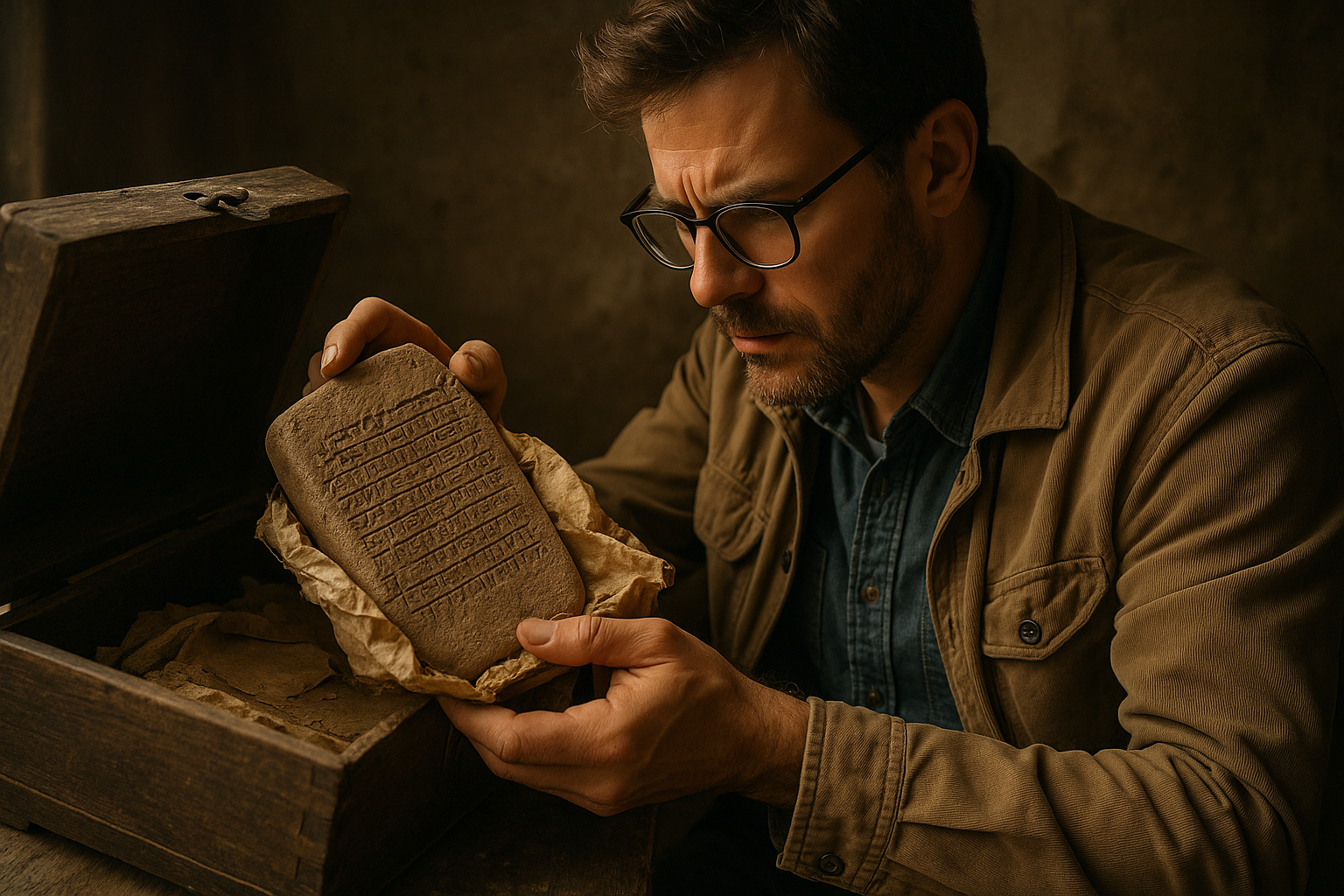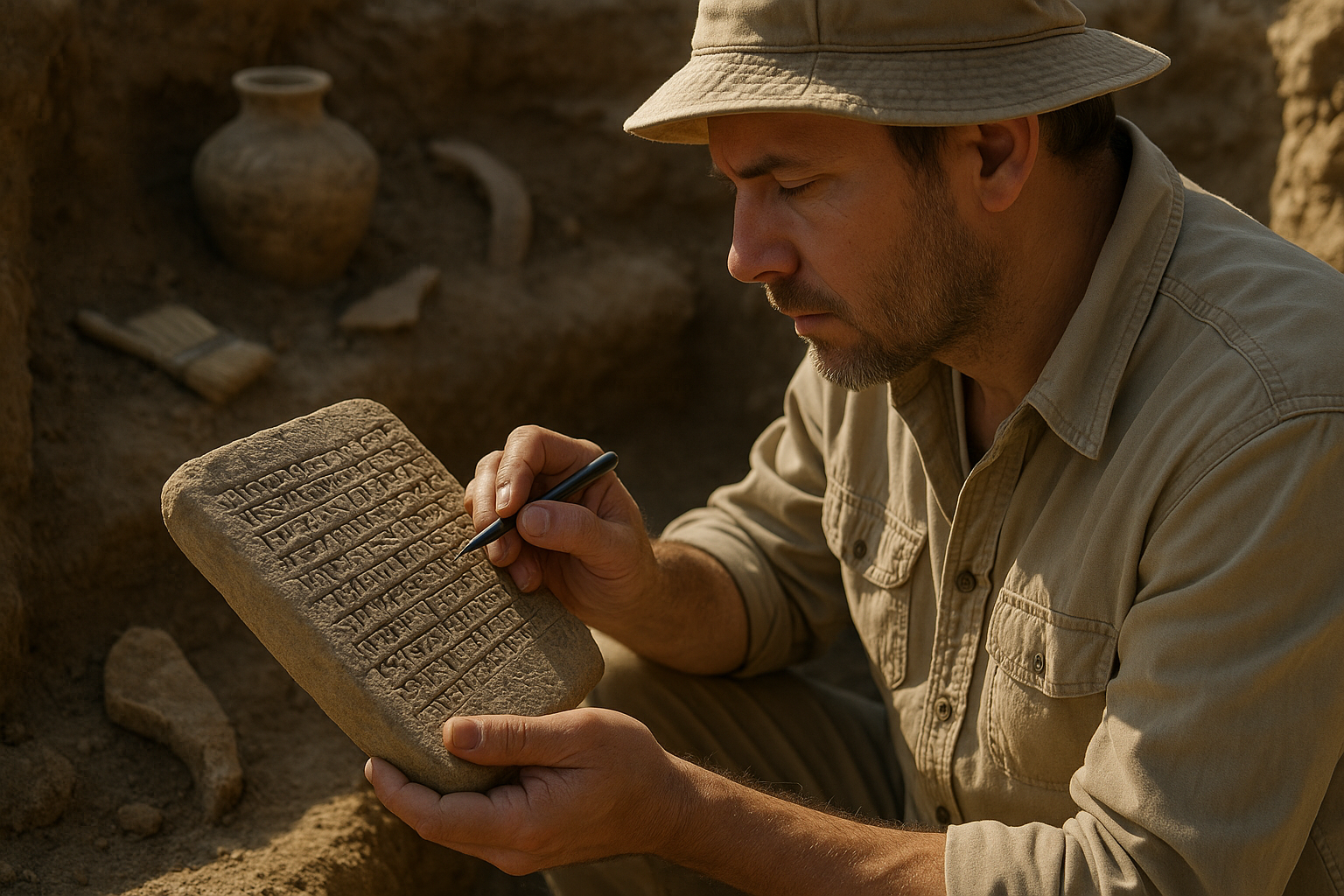Throughout history, humans have practiced elaborate rituals to preserve their legacies, and recent discoveries are unveiling the fascinating sealing ceremonies once used to protect ancient time capsules. 🏺
The concept of preserving messages and artifacts for future generations isn’t a modern invention. Archaeological evidence suggests that civilizations dating back thousands of years engaged in sophisticated time capsule practices, complete with ceremonial sealing rituals that held deep cultural and spiritual significance. These discoveries are reshaping our understanding of how ancient peoples viewed time, legacy, and communication with the future.
The Sacred Art of Ancient Preservation 🔮
Ancient sealing ceremonies weren’t merely practical measures to protect contents from decay—they were profound spiritual events that communities participated in collectively. Recent excavations across multiple continents have revealed that these ceremonies often involved priests, political leaders, and ordinary citizens, all playing specific roles in the preservation process.
In Mesopotamia, archaeologists discovered foundation deposits beneath temples that contained cuneiform tablets sealed with elaborate clay impressions. The sealing process involved invoking protective deities and performing purification rituals. Clay seals were pressed with cylinder seals depicting gods and protective symbols, transforming these capsules into sacred objects rather than simple storage containers.
Egyptian practices took preservation even further. The ancient Egyptians created sealed chambers within pyramids and temples containing artifacts meant to serve the deceased in the afterlife. These chambers underwent complex sealing ceremonies involving incantations from the Book of the Dead, ritual fumigation with incense, and the application of sacred oils to seal joints and openings.
Elements of Ancient Sealing Rituals
Researchers have identified common elements across different cultures’ sealing ceremonies, suggesting universal human concerns about preservation and legacy. These elements typically included:
- Purification of the container and its contents through water, fire, or smoke
- Invocation of protective deities or spiritual forces
- Application of symbolic seals representing authority or divine protection
- Witnessed documentation of the sealing by multiple parties
- Astronomical timing coordinated with celestial events
- Offerings or sacrifices to ensure the capsule’s protection
Chinese Dynasty Time Capsules: Buried Treasures of Wisdom 📜
Some of the most remarkable discoveries of ancient time capsules have emerged from China, where the practice of creating sealed repositories dates back to the Shang Dynasty (1600-1046 BCE). These weren’t accidental burials but intentional preservation efforts with elaborate ceremonial protocols.
The sealing of imperial time capsules during the Ming Dynasty involved a multi-day ceremony attended by court officials, scholars, and Buddhist monks. Documents describe how contents were carefully inventoried, wrapped in silk, and placed in bronze or ceramic vessels. The sealing itself occurred during auspicious dates determined by court astronomers, with the emperor personally applying the final seal using imperial jade stamps.
A particularly fascinating discovery in Xi’an revealed a Tang Dynasty time capsule sealed within a pagoda foundation. The sealing ceremony records indicated that Buddhist sutras were chanted continuously for three days while artisans applied multiple layers of sealing materials. Each layer represented a different prayer for preservation, creating a physical manifestation of spiritual protection.
The Role of Astronomical Timing ⭐
Ancient civilizations demonstrated sophisticated understanding of astronomical cycles, and they frequently coordinated sealing ceremonies with celestial events. This practice served both practical and symbolic purposes—certain times of year offered better preservation conditions, while astronomical alignments held deep spiritual significance.
Mayan time capsules discovered in the Yucatan Peninsula show evidence of sealing during specific solar and lunar alignments. Researchers have determined that priests calculated precise moments when planetary alignments created what they considered energetically favorable conditions for preservation. The sealing compounds used during these ceremonies often contained materials that could only be harvested during specific seasons, further linking the practice to natural cycles.
Roman Foundation Deposits: Building for Eternity 🏛️
The Romans elevated time capsule creation to an art form through their practice of creating foundation deposits. These weren’t hidden treasures but deliberate time capsules placed during building dedications and containing coins, pottery, and written records.
Roman sealing ceremonies were highly public affairs that reinforced political power and cultural identity. The ritual typically began with the sacrifice of animals, whose blood was mixed with materials used to seal the deposit. This practice linked the foundation’s permanence to divine favor and protection.
Excavations of Roman forts along Hadrian’s Wall have revealed foundation deposits with remarkably preserved organic materials, suggesting advanced knowledge of preservation techniques. The sealing process incorporated lead sheeting, beeswax, and tree resins in specific combinations that created nearly airtight environments. Written records indicate that the formulas for these sealing compounds were closely guarded secrets passed down through specialized craftsmen’s guilds.
Materials and Methods of Ancient Sealing
Ancient sealing ceremonies employed a surprising variety of materials, many chosen for both practical preservation qualities and symbolic meanings. The following table illustrates common materials and their purposes:
| Material | Culture | Practical Purpose | Symbolic Meaning |
|---|---|---|---|
| Beeswax | Mediterranean | Waterproofing | Purity, industriousness |
| Tree Resin | Northern Europe | Air-tight seal | Life force, renewal |
| Clay with Ash | Mesopotamia | Moisture absorption | Transformation, protection |
| Jade Powder | China | Antimicrobial properties | Immortality, virtue |
| Natron Salt | Egypt | Desiccation | Divine preservation |
Rediscovering Lost Sealing Techniques 🔬
Modern scientists are applying advanced analytical techniques to understand exactly how ancient sealing methods achieved such remarkable preservation. Chemical analysis of sealing compounds from various cultures has revealed sophisticated understanding of materials science that rivals some modern approaches.
Researchers at the British Museum analyzed sealing compounds from Assyrian time capsules and discovered they contained precise ratios of different resins that created antimicrobial environments. The ancient formulators understood that combining certain plant resins produced compounds greater than the sum of their parts—a principle now recognized as synergistic chemistry.
Similar analysis of Chinese imperial seals revealed the incorporation of mercury compounds and specific mineral pigments that deterred insects and prevented fungal growth. These weren’t accidental inclusions but carefully calculated additions based on empirical observation accumulated over generations.
The Spiritual Dimension of Preservation
While modern analysis focuses on physical and chemical properties, we must recognize that ancient peoples viewed sealing ceremonies through a fundamentally different lens. The physical act of sealing was inseparable from its spiritual dimensions—the two reinforced each other in creating true preservation.
Anthropological studies of cultures that maintain traditional sealing practices provide insights into this worldview. Among some Indigenous American communities, the act of sealing ceremonial objects involves not just physical containment but the “binding” of spiritual energies within the sealed space. Prayers and songs performed during sealing are understood to create protective barriers as real as physical materials.
This perspective helps explain why ancient sealing ceremonies were so elaborate and time-consuming. They weren’t simply being thorough in the modern sense—they were engaging in multi-dimensional preservation that addressed physical, spiritual, and temporal aspects of containment.
Time Capsules as Magical Communication Devices 💫
Recent archaeological interpretations suggest that ancient cultures viewed time capsules as more than storage—they were magical communication devices connecting past and future. The sealing ceremony completed a circuit, freezing a moment in time while simultaneously projecting it forward.
Medieval European practices provide clear evidence of this conception. Time capsules sealed within cathedral cornerstones often contained not just historical records but magical sigils and prayers specifically addressed to future discoverers. The sealing ceremony invoked angels and saints as witnesses who would guard the contents across the centuries.
Norse traditions incorporated rune stones into foundation deposits, with sealing ceremonies involving the inscription of protective runes while chanting galdr (magical songs). These weren’t decorative elements but functional magical components intended to create a protective field around the sealed contents.
Lessons for Modern Preservation 📚
Contemporary time capsule creators are rediscovering that ancient sealing ceremonies offer more than historical curiosity—they provide practical insights for modern preservation challenges. Several principles emerge from studying these ancient practices:
- Multi-layered protection: Ancient sealers rarely relied on single materials, instead creating redundant protective barriers
- Environmental awareness: Sealing ceremonies occurred when conditions optimized preservation
- Community involvement: Public ceremonies created collective memory and responsibility for preservation
- Documentation: Elaborate records ensured future generations understood contents and contexts
- Symbolic marking: Clear indicators helped future discoverers identify and properly handle sealed objects
Modern preservation scientists are adapting some ancient sealing compounds for use with contemporary materials. Research institutions experimenting with bio-based sealing materials have found that certain traditional plant-resin combinations outperform synthetic alternatives for specific applications, particularly for preserving organic materials in non-climate-controlled environments.
The Psychology of Sealing Ceremonies 🧠
Beyond their practical functions, ancient sealing ceremonies served important psychological and social purposes. The act of collectively witnessing the sealing created shared commitment to preservation and transmitted cultural values about legacy and continuity.
Anthropologists studying contemporary cultures that maintain traditional sealing practices have documented how these ceremonies create liminal spaces—thresholds between present and future. Participants report experiencing heightened awareness of mortality and legacy during sealing rituals, often describing them as among their most meaningful life experiences.
This psychological dimension explains why ancient cultures invested enormous resources in sealing ceremonies. They weren’t wasteful expenditures but investments in social cohesion and cultural continuity. The ceremony itself became part of what was preserved—a memory of collective intention transmitted across generations.
Recreating Ancient Ceremonies Today
Some modern communities are reviving ancient sealing ceremony practices, adapting historical protocols for contemporary contexts. These revivals aren’t mere historical reenactments but meaningful rituals that address modern needs for connection and legacy.
A particularly innovative example comes from Japan, where contemporary time capsule projects incorporate Shinto purification rituals into sealing ceremonies. Participants report that these adaptations create deeper emotional connections to the preservation process while honoring cultural traditions.
Similarly, several European cities have revived medieval cornerstone sealing ceremonies for new public buildings. These events draw thousands of participants and create powerful moments of collective intentionality rarely experienced in modern secular contexts.
Future Directions: What Ancient Wisdom Teaches Modern Preservationists 🌟
As we face unprecedented challenges in preserving digital and physical artifacts for future generations, ancient sealing ceremonies offer unexpected guidance. Perhaps most importantly, they remind us that preservation isn’t merely technical—it’s fundamentally about relationship, intention, and communication across time.
Current digital preservation efforts focus almost exclusively on technical solutions, but ancient practices suggest we’re missing crucial elements. Where are our sealing ceremonies for digital time capsules? How do we create collective commitment to maintaining digital archives across generations? What rituals might help us think beyond quarterly earnings reports to century-spanning preservation?
Some forward-thinking archivists are experimenting with creating ceremonial frameworks for digital preservation. These include public events marking the transfer of digital collections to new storage media, ceremonies commemorating the decommissioning of obsolete formats, and rituals celebrating successful long-term preservation milestones.
The ancient understanding that preservation requires both physical protection and spiritual/psychological commitment offers a corrective to our technology-focused approach. No storage medium lasts forever—preservation ultimately depends on each generation’s commitment to maintaining and transferring contents. Ancient sealing ceremonies created that commitment through shared ritual experience.

Unlocking the Past, Sealing the Future 🗝️
The ancient sealing ceremonies being revealed through archaeological research demonstrate sophisticated understanding of preservation that integrated material science, astronomy, spirituality, and social psychology. These weren’t primitive precursors to modern methods but sophisticated systems addressing the full complexity of preservation across time.
As we create our own time capsules for future generations, we would do well to consider what ancient cultures understood intuitively: that the act of sealing is as important as what’s sealed, that preservation requires community commitment beyond individual effort, and that connecting past and future demands both practical skill and spiritual intention.
The elaborate ceremonies our ancestors performed weren’t superstitious wastes of time but profound acknowledgments of preservation’s true nature. They recognized that safeguarding messages for the future requires more than airtight containers—it demands creating relationships across time, witnessed and sanctified through ritual action.
Perhaps the most important lesson from ancient sealing ceremonies is that preservation is ultimately an act of faith—faith that the future will come, that it will value what we’ve saved, and that our carefully sealed messages will find worthy recipients. Our ancestors encoded that faith in elaborate ceremonies that transformed simple storage into sacred trust. Modern preservationists might preserve more effectively by remembering that technological sophistication, while necessary, isn’t sufficient. True preservation requires the same elements ancient cultures recognized: careful material selection, community commitment, proper timing, clear documentation, and the recognition that we’re not just storing objects but communicating love and responsibility across the centuries.
Toni Santos is a temporal researcher and symbolic archaeologist specializing in the study of forgotten burial systems, sacred archival practices, and the visual languages embedded in ancient temporal lore. Through an interdisciplinary and artifact-focused lens, Toni investigates how humanity has encoded knowledge, memory, and mystery into the temporal world — across cultures, rituals, and vanished civilizations. His work is grounded in a fascination with time capsules not only as vessels, but as carriers of hidden meaning. From extinct burial ritual practices to mythical codices and secret temporal seals, Toni uncovers the visual and symbolic tools through which cultures preserved their relationship with the temporal unknown. With a background in design semiotics and temporal artifact history, Toni blends visual analysis with archival research to reveal how time capsules were used to shape identity, transmit memory, and encode sacred knowledge. As the creative mind behind eltonxy, Toni curates illustrated chronologies, speculative temporal studies, and symbolic interpretations that revive the deep cultural ties between artifacts, ritual markings, and forgotten messages. His work is a tribute to: The lost temporal wisdom of Forgotten Time Capsule Burial Rituals The guarded archives of Sacred Codices and Forgotten Temporal Archives The mythopoetic presence of Temporal Symbols and Ritual Markings The layered visual language of Vanished Artifacts and Temporal Messages Whether you're a temporal historian, symbolic researcher, or curious gatherer of forgotten chronological wisdom, Toni invites you to explore the hidden roots of time capsule knowledge — one seal, one glyph, one message at a time.




